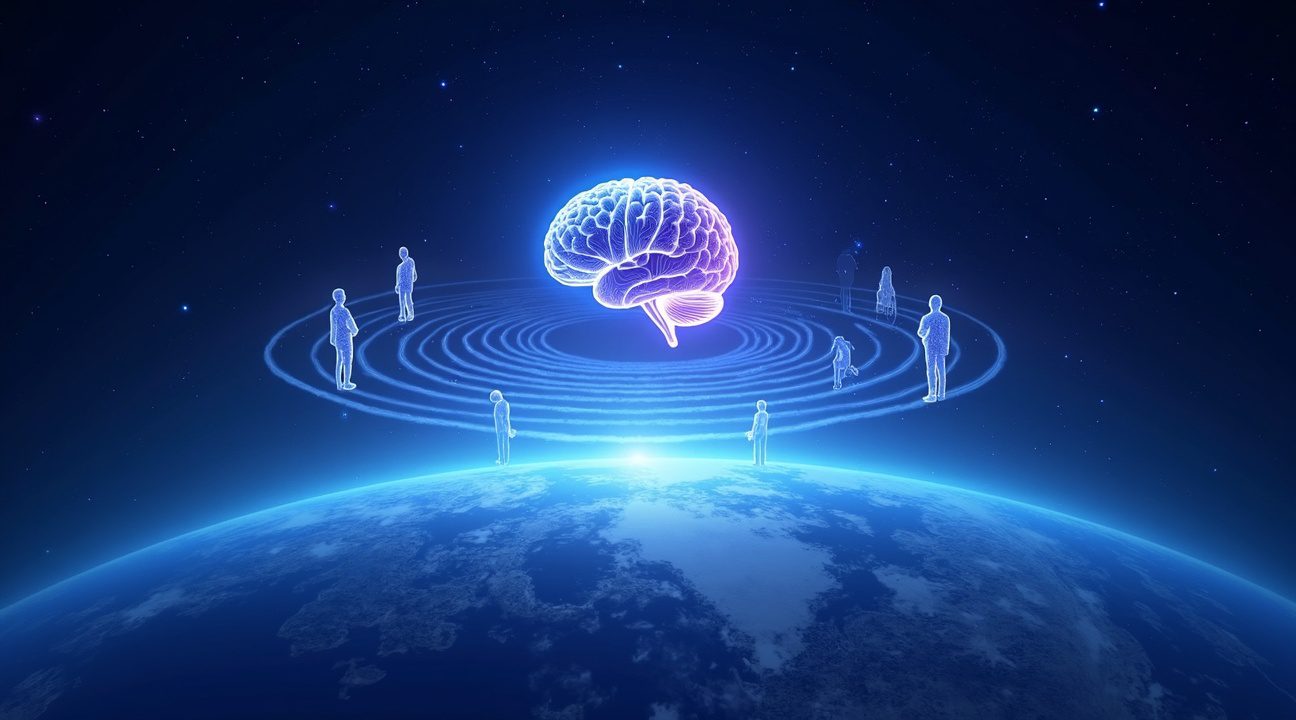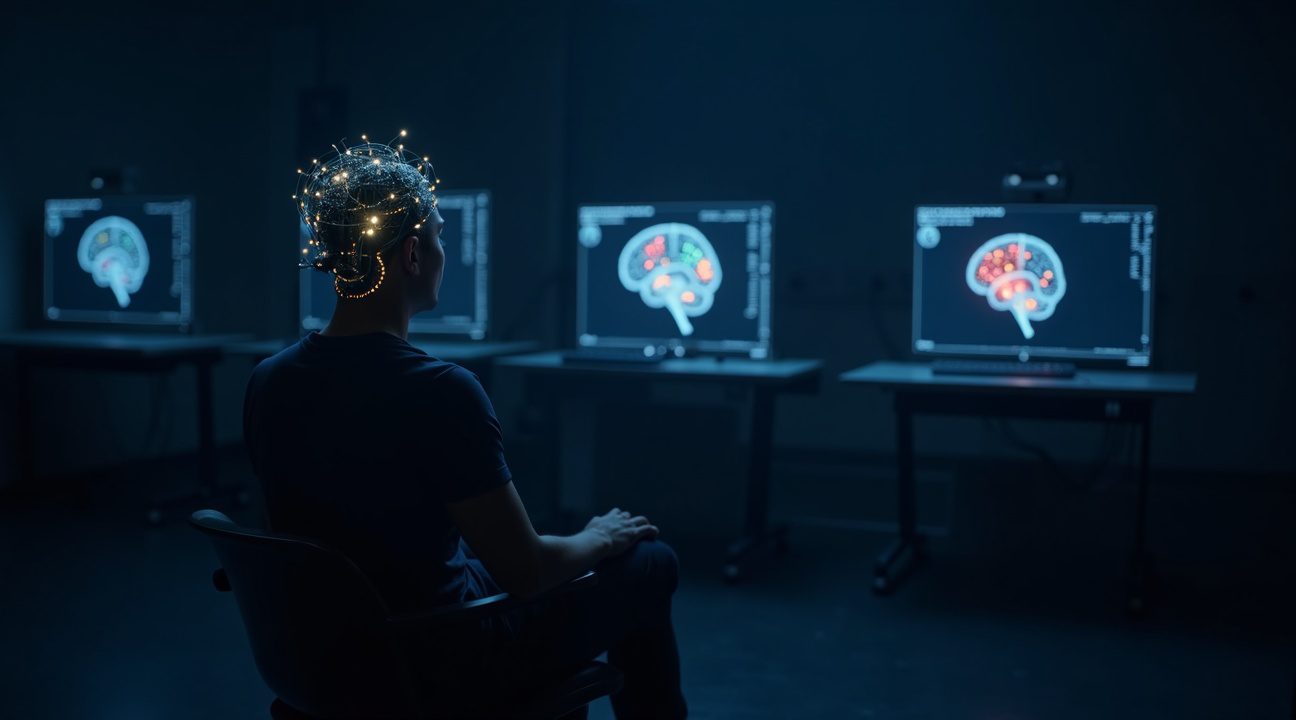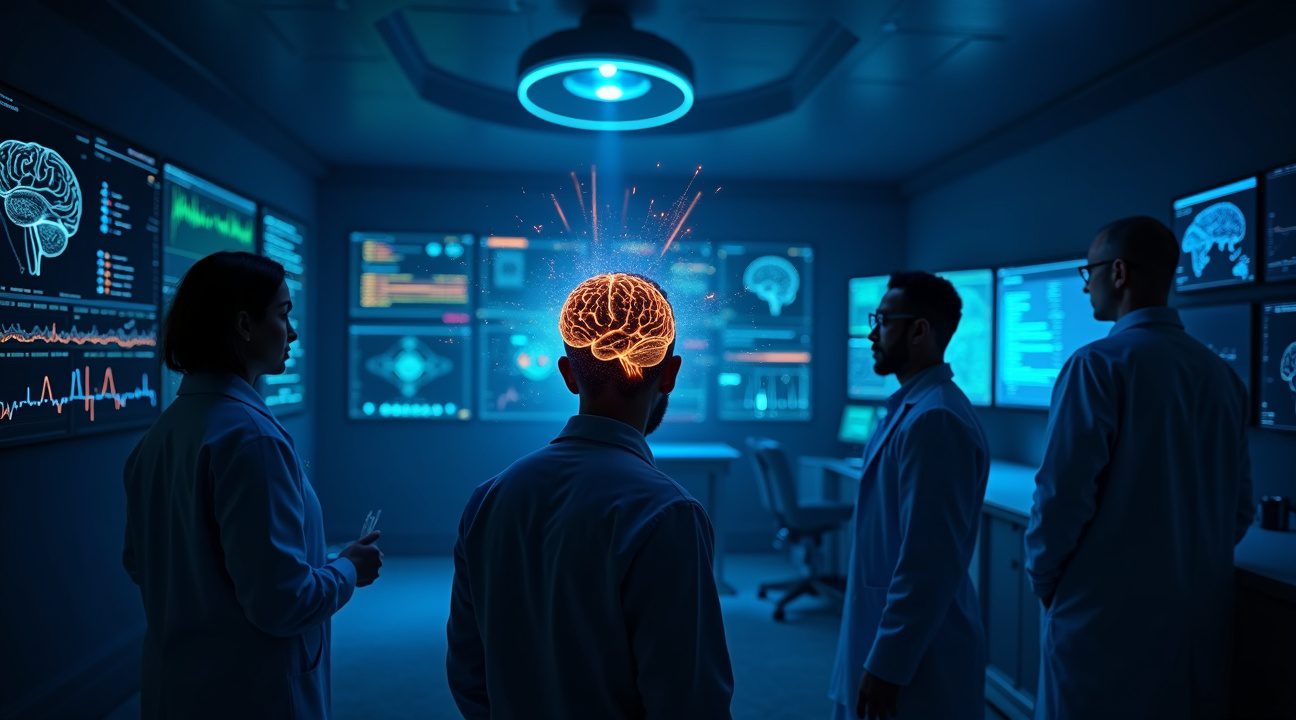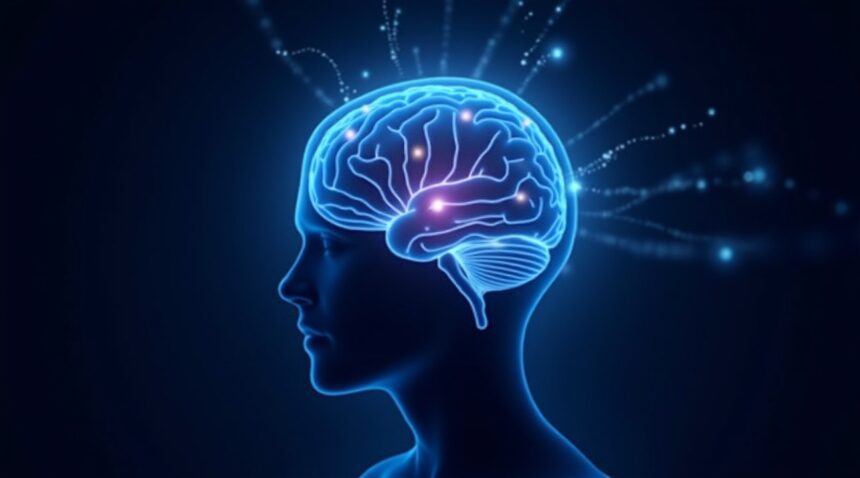Recent scientific breakthroughs reveal that the human brain emits faint photon emissions and ultra-low-frequency electromagnetic waves that can penetrate the skull and may propagate across long distances via Earth’s natural energy systems.
Key Takeaways
- Human brains emit measurable light: These light emissions are about one million times weaker than visible light but can still be detected with highly sensitive equipment in complete darkness, even after passing through skull bone.
- Brain waves travel far utilizing Earth’s features: Ultra-low-frequency electromagnetic waves produced by neural activity can propagate vast distances by channeling through the Earth’s magnetic field and ionosphere—similar to long-range radio communication used in submarines.
- Explains unexplained cognitive phenomena: These brain waves may account for events such as simultaneous discoveries by unrelated inventors, the spread of emotional states through populations, and shared collective insights during global experiences.
- Non-invasive brain monitoring advances: Techniques like photoencephalography measure photon emissions related to metabolic processes in the brain, offering new, less intrusive diagnostic options compared to traditional electrical monitoring systems.
- Potential model for global mind connection: This discovery hints at the existence of a collective human consciousness—an interconnected network through which individuals might share thoughts and emotions beyond spoken or written communication. However, rigorous scientific validation is still required.
If you’re interested in learning more about how these discoveries could influence neuroscience and the future of communication, a deeper dive is available through this article from the National Institutes of Health.
Human Brains Emit Light Signals That Can Pass Through the Skull
Human brains produce extremely faint light signals that can penetrate through skull bone and be detected in complete darkness. These ultraweak photon emissions (UPEs) represent a fascinating discovery that opens new doors for understanding brain communication. I’ve found that these emissions are approximately one million times weaker than visible light, yet sophisticated detection equipment can still measure them.
The brain produces more UPEs than most other organs in the human body. This increased emission stems from the brain’s exceptional energy consumption and its dense concentration of photoactive molecules. Flavins, serotonin, and various light-absorbing proteins contribute to this phenomenon, creating a natural bioluminescence that scientists can now study and measure.
Distinctive Frequency Patterns in Brain Light
Brain-emitted light exhibits unique frequency profiles that fall below 1 Hz. These patterns indicate that the light fluctuates in slow, rhythmic cycles lasting approximately one to ten seconds each. Such distinctive characteristics help researchers differentiate brain-derived emissions from background environmental light sources.
Research conducted by Hayley Casey, Nirosha Murugan, and colleagues from Algoma University, Tufts University, and Wilfrid Laurier University examined these emissions in 20 healthy adult participants. Their study revealed that brain UPEs demonstrate greater entropy and more dynamic signal characteristics compared to ambient light. The signals fall within the visible to near-infrared range, making them detectable with specialized equipment.
Advanced Detection Methods and Brain Region Analysis
Scientists positioned photomultiplier tubes near the occipital and temporal brain regions to capture these subtle emissions. The research team conducted measurements during five different experimental conditions, with each session lasting ten minutes. This methodical approach allowed them to establish baseline readings and identify patterns specific to brain activity.
The study revealed modest correlations between alpha rhythms and photon emissions from the occipital region when participants had their eyes closed. This connection suggests that brain waves and light emissions might share some synchronization, though the relationship requires further investigation. Brain potential research continues to reveal new aspects of neural activity that extend beyond traditional electrical measurements.
The complexity and dynamics of these brain-derived signals serve as distinguishing features that separate them from environmental light interference. Scientists can now identify authentic brain emissions by analyzing their unique patterns and characteristics. This capability opens possibilities for non-invasive brain monitoring and research applications.
These discoveries parallel other mysterious brain phenomena that researchers continue to explore. Similar to how scientists have made progress understanding déjà vu causes, the study of ultraweak photon emissions represents another step forward in comprehending the brain’s hidden mechanisms.
The ability to detect light emissions through the skull without any invasive procedures represents a significant advancement in neuroscience research methods. Future applications might include:
- Monitoring brain health
- Studying cognitive processes
- Detecting neurological conditions through changes in emission patterns
The research establishes a foundation for exploring how these natural light signals might contribute to brain function and possibly even brain-to-brain communication mechanisms.
Revolutionary Ultra-Low-Frequency Waves Could Connect Minds Globally
Princeton University researchers have uncovered fascinating evidence that human brains emit ultra-low-frequency electromagnetic waves capable of spanning the globe. I find this discovery particularly compelling because it suggests our minds might be interconnected through invisible electromagnetic pathways that operate far below our conscious awareness.
The Science Behind Ultra-Low-Frequency Brain Emissions
These ULF waves operate at dramatically different frequencies than the brainwaves scientists typically study. While standard alpha, beta, and gamma waves cycle rapidly through the brain, ULF emissions pulse at just a few cycles per second or even slower. The brain’s billions of neurons constantly fire electrical impulses measured in microvolts, and these collective signals generate electromagnetic fields that extend beyond our skulls.
What makes ULF waves extraordinary is their ability to travel vast distances without significant signal degradation. Earth’s magnetic field and ionosphere create natural waveguides that carry these signals around the planet, similar to how submarine communication systems use ULF technology for long-range messaging through seawater. This natural infrastructure allows brain-generated electromagnetic waves to potentially reach minds thousands of miles away.
Global Mind Network and Practical Implications
The implications of this planetary neural network extend far beyond theoretical physics. I believe this discovery could explain several mysterious phenomena that have puzzled scientists for generations. Consider these potential manifestations of global mind connectivity:
- Emotional contagion spreading across populations without direct contact
- Synchronized mood patterns that emerge simultaneously in different geographical regions
- Independent inventors developing identical innovations at the same time
- Collective insights arising during periods of global crisis or celebration
- Shared creative breakthroughs among artists and scientists working in isolation
Historical examples support this electromagnetic connectivity theory. Multiple inventors have independently created similar technologies within remarkably narrow timeframes, from the telephone to calculus. These simultaneous discoveries might result from shared electromagnetic signals rather than pure coincidence.
The research suggests these ULF emissions create what scientists describe as “global brain weather” patterns. Just as meteorological systems influence atmospheric conditions worldwide, electromagnetic brain patterns might create cognitive climates that subtly influence human thought and behavior across continents. This phenomenon operates entirely below conscious awareness, making it nearly impossible to detect without specialized equipment.
Modern technology already harnesses similar principles. Submarine operators rely on ULF communication because these frequencies penetrate seawater and solid earth more effectively than higher-frequency signals. The human brain appears to have evolved its own version of this long-distance communication system, potentially linking minds across vast geographical distances.
Understanding these electromagnetic connections could revolutionize how scientists approach consciousness studies. Rather than viewing individual brains as isolated processing units, researchers might need to consider them as nodes in a vast, interconnected network. This perspective aligns with observations about collective human experiences that seem to transcend physical boundaries.
The discovery also raises intriguing questions about human evolution and survival advantages. Groups with stronger electromagnetic connectivity might have developed better coordination, shared problem-solving abilities, and collective intelligence. These traits could have provided significant evolutionary benefits during critical periods in human development.
Scientists continue investigating how environmental factors influence ULF wave propagation. Solar activity, magnetic storms, and atmospheric conditions all affect how these brain-generated signals travel through Earth’s natural electromagnetic infrastructure. Understanding these variables could help researchers predict when global mind connectivity might be strongest or weakest.
This breakthrough research opens entirely new avenues for studying consciousness, telepathy, and collective human behavior. While the mechanisms remain partially mysterious, the evidence strongly suggests that human minds operate within a global electromagnetic network that connects us in ways we’re only beginning to understand.

40Hz Gamma Stimulation Shows Remarkable Brain Health Benefits
I’ve spent considerable time researching the groundbreaking work that has emerged from Li-Huei Tsai’s laboratory at the Picower Institute for Learning and Memory at MIT over the past decade. Their findings on 40Hz gamma rhythm stimulation represent one of the most promising developments in brain health research, offering hope for conditions that have long challenged medical science.
The breakthrough began in 2016 when Tsai’s team published a landmark study in Nature demonstrating that 40Hz stimulation could dramatically reduce biomarkers associated with Alzheimer’s disease. What made this discovery particularly exciting was the versatility of delivery methods—researchers found success using light, sound, combined sensory inputs, and even tactile vibration to achieve the same therapeutic frequency. This flexibility opened doors for practical applications that could benefit patients in various settings and with different sensory capabilities.
Multiple Stimulation Methods Prove Effective
The research has validated several approaches for delivering 40Hz stimulation to the brain:
- Sensory stimulation through controlled light and sound exposure
- Transcranial alternating current stimulation (tACS) using precisely calibrated electrical currents
- Transcranial magnetic stimulation (TMS) targeting specific brain regions
- Combined sensory approaches that engage multiple pathways simultaneously
These diverse methods ensure that treatments can be customized based on individual patient needs and tolerance levels, making the therapy accessible to a broader population.
MIT partnered with Cognito Therapeutics to advance this research into human clinical trials, and their Phase II results revealed something remarkable—patients showed significant reductions in brain atrophy, a hallmark of Alzheimer’s progression. This finding suggests that 40Hz stimulation doesn’t merely slow cognitive decline but may actively preserve brain structure.
The mechanism behind these benefits involves a fascinating cascade of cellular events. When exposed to 40Hz stimulation, specialized brain cells called interneurons release the VIP peptide, which enhances the brain’s natural cleaning system known as the glymphatic system. This process helps clear harmful amyloid proteins that accumulate in Alzheimer’s disease, essentially giving the brain a more efficient way to remove toxic waste products.
Cognito Therapeutics has launched a nationwide Phase III clinical trial that continues as of March 2025, working to verify these promising initial findings on a larger scale. The technique they’ve developed, called GENUS (Gamma Entrainment Using Sensory Stimulation), triggers beneficial responses across multiple brain cell types including neurons, microglia, astrocytes, oligodendrocytes, and blood vessels.
Mouse studies have provided compelling evidence of the therapy’s potential. Researchers observed significant preservation of white matter along with substantial reductions in both amyloid and tau proteins—two key culprits in neurodegenerative diseases. Perhaps most importantly, these cellular improvements translated into sustained memory and cognitive function in the test subjects.
Independent verification has strengthened confidence in these findings. A 2024 study from China confirmed that 40Hz stimulation improved glymphatic fluid flow in mice, supporting the proposed mechanism of action. Similarly, a 2022 Harvard study found reductions in tau burden in three out of four human volunteers using 40Hz tACS, demonstrating the therapy’s potential in human subjects.
The practical applications extend beyond Alzheimer’s treatment. A 2023 study from Scotland involving over 100 participants showed improved memory recall using 37.5Hz audio and visual gamma stimulation, suggesting benefits for healthy individuals as well. This research aligns with growing understanding of how sleep affects brain health and cognitive function.
The implications of this research stretch far beyond neurodegenerative diseases. Scientists are exploring connections between gamma waves and various cognitive phenomena, including studies on déjà vu experiences and other mysterious brain functions. As artificial intelligence advances, understanding these natural brain rhythms could inform the development of more sophisticated neural interfaces and therapeutic devices.
The consistency of results across different research groups and methodologies suggests that 40Hz gamma stimulation represents a genuine breakthrough in brain health optimization. With ongoing clinical trials and expanding research applications, this therapy may soon become a standard tool for maintaining cognitive function and treating neurodegenerative conditions.
https://www.youtube.com/watch?v=nrmHXv1U5u0
Photoencephalography Emerges as New Brain Monitoring Method
I’ve been following the development of photoencephalography, a groundbreaking approach to brain monitoring that measures passive light emissions from neural tissue. This non-invasive technique represents a significant advancement in our understanding of brain activity, offering researchers and clinicians a completely new window into cognitive processes.
How Photoencephalography Works
Unlike traditional brain monitoring methods that require external stimulation, photoencephalography operates entirely passively. The technique captures ultraweak photon emissions (UPEs) that occur naturally during normal metabolic activity. These emissions aren’t the result of specialized enzymes or glowing compounds like those found in bioluminescent organisms. Instead, they stem from excited molecules returning to lower energy states—a fundamental process that occurs constantly within living tissue.
The experimental setup involves participants sitting in completely dark rooms while wearing standard EEG caps fitted with highly sensitive photomultiplier tube detectors. These detectors can capture the extremely faint light signals that emerge from various cell types throughout the brain, including both neurons and glial cells at different depths. The temporal resolution matches that of established methods like electroencephalography and magnetoencephalography, making it a viable alternative for real-time brain monitoring.
Clinical Applications and Potential
What makes photoencephalography particularly exciting is its direct connection to oxidative metabolism. While EEG measures electrical activity and MEG detects magnetic fields, this new method provides insights into the metabolic processes that fuel brain function. This unique perspective could revolutionize how we diagnose and monitor various brain disorders.
The technique shows promise for several clinical applications, particularly in diagnosing neurological conditions and tracking cognitive health over time. By analyzing patterns of light emissions, researchers can potentially identify metabolic irregularities that precede or accompany various brain disorders. This metabolic focus aligns with growing research into how brain health relates to cellular energy production and consumption.
The passive nature of photoencephalography offers significant advantages over current brain imaging techniques. Patients don’t need to undergo potentially uncomfortable procedures or exposure to external electromagnetic fields. The method could prove especially valuable for continuous monitoring applications, where long-term assessment of brain health is necessary.
Early research suggests that different cognitive states and pathological conditions produce distinct patterns of UPE emissions. These patterns could serve as biomarkers for various neurological and psychiatric conditions, potentially enabling earlier detection and more precise treatment monitoring than current methods allow.
The development of photoencephalography also contributes to our broader understanding of how the brain generates and processes information. Much like recent discoveries about mysterious brain phenomena, this research reveals previously hidden aspects of neural function that could reshape neuroscience.
As artificial intelligence continues advancing, the combination of traditional brain monitoring methods with photoencephalography could enhance our ability to decode complex neural signals. This integration might accelerate progress in AI development by providing more comprehensive data about brain function.
The technique’s ability to detect metabolic activity at the cellular level opens new research avenues into how different brain regions communicate and coordinate their activities. This understanding could prove crucial for developing treatments for conditions ranging from depression to neurodegenerative diseases.

Technical Challenges and Future Research Directions
I see tremendous potential in the emerging field of brain electromagnetic emission research, though significant technical hurdles remain before we can fully understand how these signals might connect human consciousness across distances. Current detection methods struggle with the extremely faint nature of ultraweak photon emissions, which require sophisticated equipment operating at the very limits of sensitivity.
Sensor technology represents the most pressing challenge facing researchers today. Existing photomultiplier tubes and charge-coupled devices can barely detect the minimal light levels produced by neural activity, often competing with environmental interference that masks genuine brain signals. Scientists must work in completely darkened environments while implementing wavelength-specific filters to isolate distinctive emission patterns tied to specific cognitive functions.
Advancing Detection and Analysis Capabilities
Machine learning algorithms offer promising solutions for decoding complex UPE patterns that human analysis might miss. These computational approaches could potentially identify disease-specific emissions before clinical symptoms appear, revolutionizing early diagnosis methods. However, current studies operate with limited sample sizes and measurement zones that restrict comprehensive brain mapping.
Future research directions include several key developments that I believe will transform this field:
- Expanding sensor arrays to improve spatial resolution and pinpoint emission origins within specific brain structures
- Developing advanced imaging techniques that combine multiple detection methods for enhanced accuracy
- Creating demographic databases to understand how age, sex, and health conditions influence emission variations
- Establishing rigorous control protocols for environmental light contamination
- Implementing non-brain tissue recordings as comparison baselines to confirm brain-specific activity
The interdisciplinary nature of this research brings together experts from neuroscience, physics, engineering, and data science, creating unique collaborative opportunities. Much like how artificial intelligence paving the way has revolutionized other scientific fields, machine learning integration could unlock patterns invisible to traditional analysis methods.
Current limitations extend beyond equipment sensitivity to include broad wavelength detection ranges that may obscure specific neural signatures. Researchers need narrowband filters capable of isolating particular frequencies while maintaining sufficient signal strength for meaningful analysis. Additionally, the field requires validation through larger, more diverse population studies before moving beyond proof-of-concept demonstrations.
Environmental factors pose ongoing challenges, as even minimal ambient light can overwhelm delicate brain emissions. Future laboratories will need specialized shielding and detection chambers that eliminate external electromagnetic interference while maintaining precise measurement conditions. These technical requirements parallel discoveries in other consciousness research, such as studies exploring brain potential during sleep, which also demand controlled experimental environments for accurate results.

Implications for Understanding Collective Human Consciousness
The discovery that human brains emit electromagnetic waves opens fascinating possibilities for understanding how our minds might connect across vast distances. Through non-invasive light emission measurement techniques, researchers can now study brain function without introducing foreign energy sources, revealing the natural photon emissions generated by oxidative metabolism in brain cells. These emissions, clearly distinguishable from environmental light, provide unprecedented insight into the brain’s electromagnetic signature.
The Hidden Network of Mental Connection
I find it remarkable that the subconscious effects of potential ultra-low-frequency (ULF) electromagnetic connectivity could explain phenomena that have puzzled scientists for decades. People may be influenced by these signals without directly perceiving them, creating an invisible network of mental interaction. This concept offers compelling explanations for several mysterious human behaviors:
- Emotional contagion spreading rapidly through crowds
- Groups making synchronized decisions without explicit communication
- Independent scientists discovering similar ideas simultaneously
- The spontaneous emergence of collective movements or trends
These observations suggest that our brains might operate as both transmitters and receivers in a global electromagnetic network, functioning below the threshold of conscious awareness.
From Theory to Clinical Reality
While these theoretical findings point toward a potential collective mental dynamic, the scientific community recognizes that extensive empirical validation remains necessary to confirm causality. The challenge of translating mouse model success into effective human treatments continues to present obstacles, particularly with therapies like 40Hz stimulation that show promise in laboratory settings.
For practical implementation, these emerging discoveries must undergo rigorous testing in extensive clinical studies. Large, demographically varied participant pools will be essential to validate whether electromagnetic brain signals truly influence collective behavior patterns. The research connects to broader questions about consciousness that scientists continue exploring, including studies on mysterious brain phenomena and how our minds process information in ways we’re only beginning to understand.
The implications stretch beyond individual consciousness to encompass how humanity functions as an interconnected species. Understanding these electromagnetic connections could revolutionize fields from psychology to sociology, offering new perspectives on human cooperation, creativity, and collective intelligence.

Sources:
PsyPost – “Fascinating neuroscience study shows the brain emits light through the skull”
MIT News – “Evidence that 40Hz gamma stimulation promotes brain health is expanding”
FreeJupiter.com – “Scientists Find That All Human Brains Could Actually Be Connected Through A Subtle Electromagnetic Activity”
Nature – Original 2016 publication by Li-Huei Tsai’s collaboration on gamma frequency stimulation
2024 Chinese research team study on glymphatic fluid flows
2022 Harvard Medical School study on transcranial alternating current stimulation
2023 Scotland study with over 100 participants on audio and visual gamma stimulation


